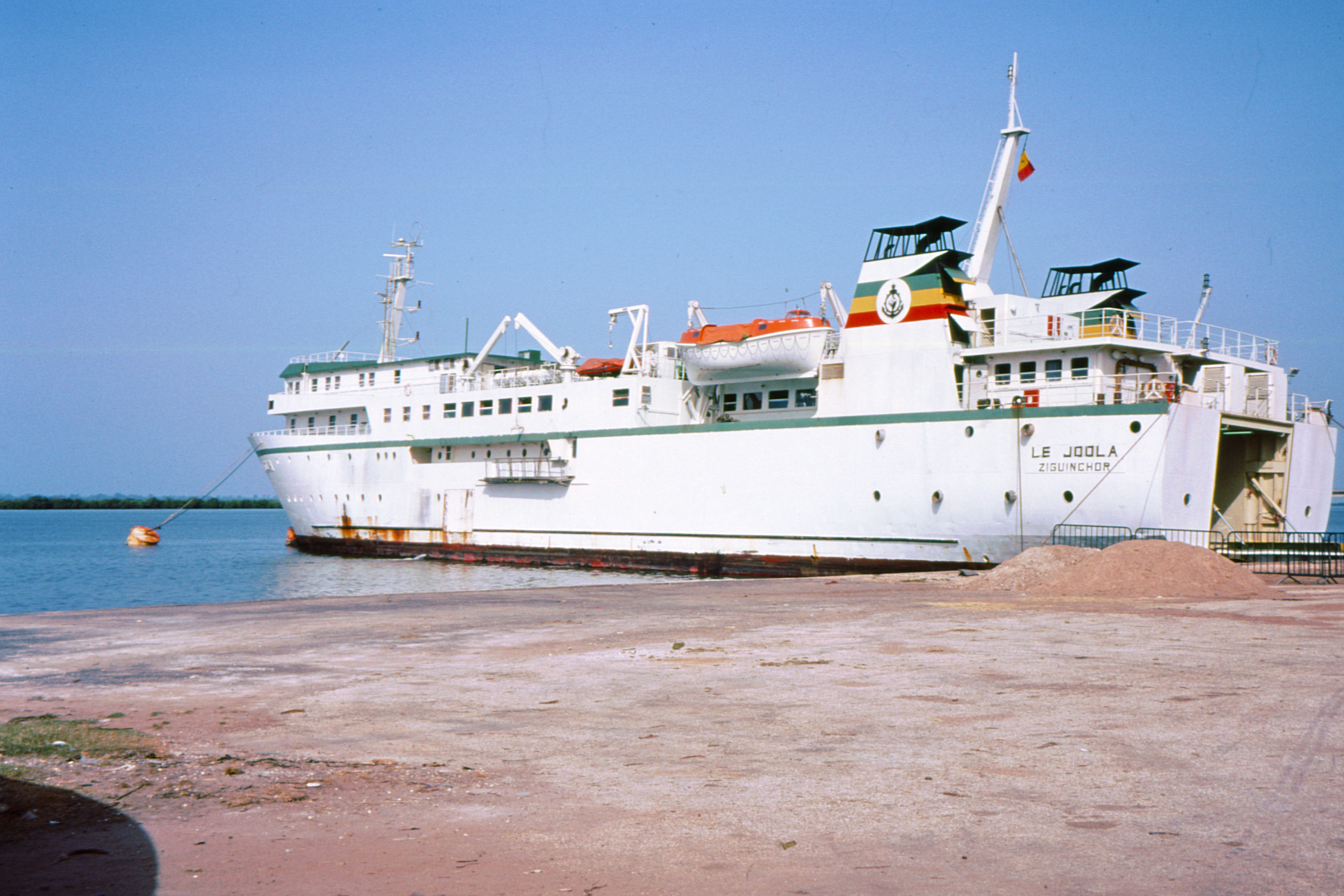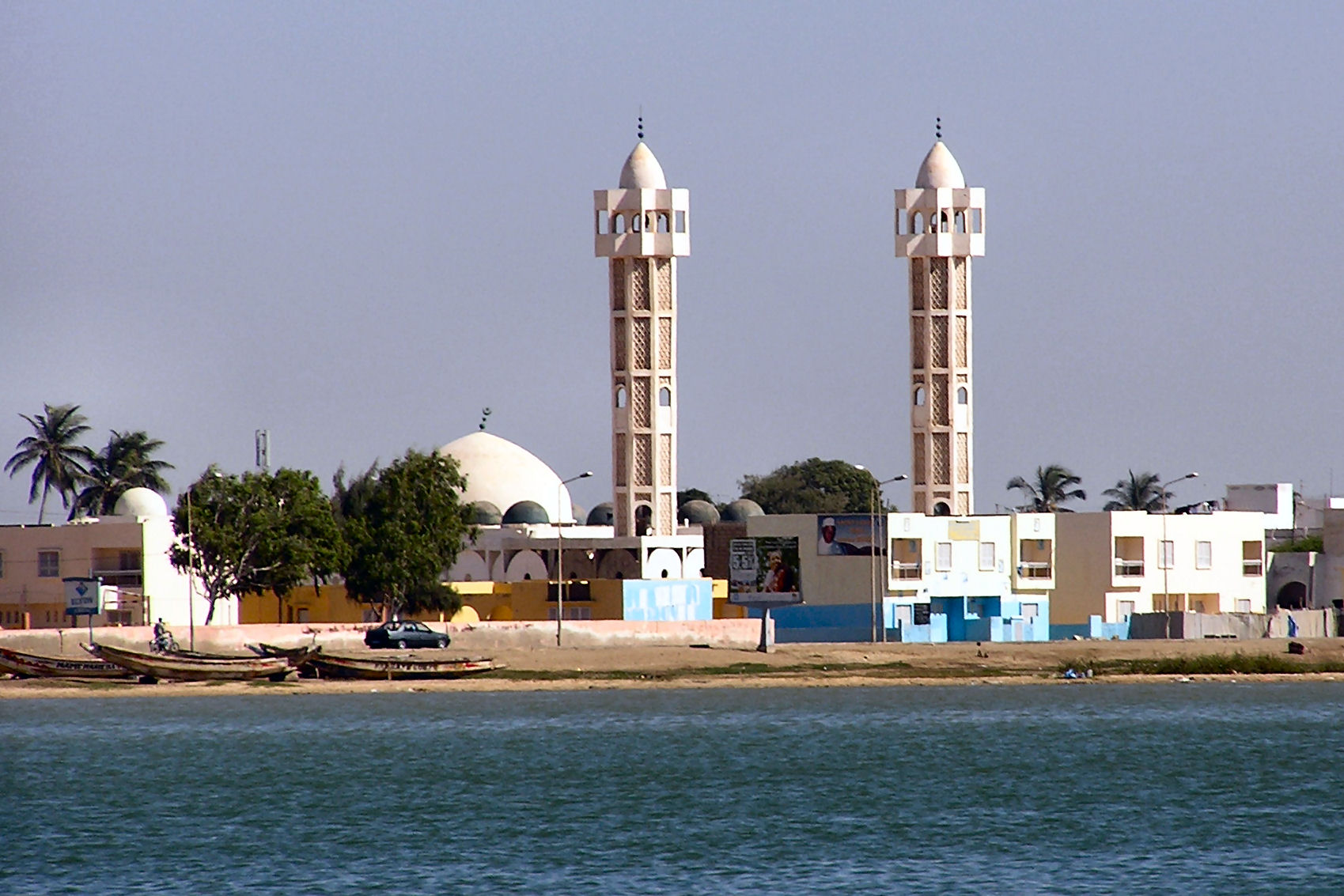|
Carabane
Carabane, also known as Karabane, is an island and a village located in the extreme south-west of Senegal, in the mouth of the Casamance River. This relatively recent geological formation consists of a shoal and alluvium to which soil is added by accumulation in the branches and roots of the mangrove trees which cover most of the island. Along with the rest of Ziguinchor Region, Carabane has a tropical climate, cycling between a dry season and a wet season. The island was once considered an arid location where no useful plants were likely to grow, but it now supports several types of fruit tree, the most common of which are mangos and oranges. Although the nearby Basse Casamance National Park and Kalissaye Avifaunal Reserve have been closed for years because of the Casamance Conflict, Carabane has continued to attract ornithologists interested in its wide variety of birds. Various species of fish are plentiful around the island, but there are very few mammals. The earliest kno ... [...More Info...] [...Related Items...] OR: [Wikipedia] [Google] [Baidu] |
Elinkine
Elinkine (also called Elinlin or Elinkinde) is a town in Casamance, Senegal, located at the mouth of the Casamance River, from Oussouye Department, Oussouye. History A treaty between France and the leaders of Kagnout took place in Elinkine on March 25, 1851, resulting in the cession of the island of Carabane to France. The well of Umar Tall was classified as a historic monument in 2003. Administration The village is part of the rural community of Mlomp, Loudia Ouoloff, Oussouye Department, Oussouye, Ziguinchor Region, Ziguinchor. Geography The nearest towns are Efrane Elinkine, Sifoka, Carabane, Samatit, Santiaba Ouolof, and Tamani. Population According to PEPAM (Water and Sanitation Program for the Millennium), there are 339 people and 47 households in Elinkine. Economy This small fishing port is a popular tourist location. This is partially because of its beach, but also because it is the embarkation point for the island of Carabane. Bibliography * External links Maps, ... [...More Info...] [...Related Items...] OR: [Wikipedia] [Google] [Baidu] |
Kagnout
Kagnout (also called Cagnout or Cagnut) is a village in Casamance, Senegal Senegal,; Wolof: ''Senegaal''; Pulaar: 𞤅𞤫𞤲𞤫𞤺𞤢𞥄𞤤𞤭 (Senegaali); Arabic: السنغال ''As-Sinighal'') officially the Republic of Senegal,; Wolof: ''Réewum Senegaal''; Pulaar : 𞤈𞤫𞤲𞤣𞤢𞥄𞤲𞤣𞤭 .... It is located near the left bank of the estuary of the Casamance River. It is part of the rural community of Mlomp, in the district of Loudia Ouoloff, the department of Oussouye and the region of Ziguinchor. Administratively, it is made up of three official villages: Cagnoute Bouhibane, Cagnoute Ebrouaye and Cagnoute Houyoho. History On March 25, 1851, the leaders of Kagnout permanently ceded the island of Carabane to France. Administration The village is part of the rural community of Mlomp in Oussouye Department, Oussouye, Ziguinchor Region, Ziguinchor. Geography The nearest towns are Carabane, Hitou, Kabounkoute, Niomoune, Loudia Diola, Mlomp, and ... [...More Info...] [...Related Items...] OR: [Wikipedia] [Google] [Baidu] |
MV Le Joola
MV ''Le Joola'' was a Senegalese government-owned roll-on/roll-off ferry that capsized off the coast of The Gambia on 26 September 2002, with 1,863 deaths and 64 survivors. It is thought to be the second-worst non-military disaster in maritime history. The ship was plying the route from Ziguinchor in the Casamance region to the Senegalese capital, Dakar, when it ran into a violent storm, farther out to sea than it was licensed to sail. The estimated 2,000 passengers aboard (about half of whom lacked tickets) would have amounted to nearly four times the ship's design load. The large numbers sleeping on-deck (and thus above its center of buoyancy) added further instability. Rescue operations did not start for several hours. A government inquiry principally blamed negligence, and accusations were levelled at both the Senegalese president Abdoulaye Wade and prime minister Mame Madior Boye. The ship The ship was named ''Le Joola'' after the Jola people of southern Senegal. Cons ... [...More Info...] [...Related Items...] OR: [Wikipedia] [Google] [Baidu] |
Karoninka People
The Karoninka people (also called Karone) are an ethnic group in West Africa related to the Jola. They live mainly in Casamance, Senegal, on the right bank of the Casamance River and the islands in the mouth, but also in The Gambia. Population They represent approximately 1% of the population of Senegal. See also * Carabane * Demographics of Senegal This article is about the demographics, demographic features of the population of Senegal, including population density, Ethnic group, ethnicity, education level, health of the populace, economic status, Religion in Senegal, religious affiliatio ... External links ''Wuli, Elan & Inerti: The Karoninka Approach to Sustainability'' {{authority control Ethnic groups in Senegal Ethnic groups in the Gambia ... [...More Info...] [...Related Items...] OR: [Wikipedia] [Google] [Baidu] |
Simulium
''Simulium'' is a genus of black flies, which may transmit diseases such as onchocerciasis (river blindness). It is a large genus with several hundred species, and 41 subgenera. The flies are pool feeders. Their saliva, which contains anticoagulants, a number of enzymes and histamine, is mixed with the blood, preventing clotting until it is ingested by the fly. These bites cause localized tissue damage, and if the number of feeding flies is sufficient, their feeding may produce a blood-loss anaemia. The host's reaction to fly attacks may include systemic illness, allergic reactions or even death, presumably mediated by histamine. In humans, this systemic reaction is known as "black fly fever" and is characterized by headaches, fever, nausea, adenitis, generalized dermatitis, and allergic asthma. Systematics Subgenera: * '' Afrosimulium'' Crosskey, 1969 * '' Anasolen'' Enderlein, 1930 * '' Asiosimulium'' Takaoka & Choochote, 2005 * '' Aspathia'' Enderlein, 1935 * '' Boop ... [...More Info...] [...Related Items...] OR: [Wikipedia] [Google] [Baidu] |
Islam In Senegal
Islam is the predominant religion in Senegal. 97 percent of the country's population is estimated to be Muslim. Islam has had a presence in Senegal since the 11th century. Sufi brotherhoods expanded with French colonization, as people turned to religious authority rather than the colonial administration. The main Sufi orders are the Tijaniyyah, the Muridiyyah or Mourides, and to a lesser extent, the pan-Islamic Qadiriyyah and the smaller Layene order. Approximately 1% are Shiites and <1% are Muslims. History Introduction of Islam  For nearly a millennium, there has been an Islamic presence in Senegal. Islam's ...
For nearly a millennium, there has been an Islamic presence in Senegal. Islam's ...
[...More Info...] [...Related Items...] OR: [Wikipedia] [Google] [Baidu] |
Roman Catholicism In Senegal
The Catholic Church in Senegal is part of the worldwide Catholic Church, under the spiritual leadership of the Pope in Rome. There are over around 300,000 Catholics in Senegal. The country is divided into seven dioceses including one archdiocese. * Dakar ** Kaolack ** Kolda ** Saint-Louis du Sénégal ** Tambacounda ** Thiès ** Ziguinchor References External links Giga-Catholic Information Senegal Senegal Senegal,; Wolof: ''Senegaal''; Pulaar: 𞤅𞤫𞤲𞤫𞤺𞤢𞥄𞤤𞤭 (Senegaali); Arabic: السنغال ''As-Sinighal'') officially the Republic of Senegal,; Wolof: ''Réewum Senegaal''; Pulaar : 𞤈𞤫𞤲𞤣𞤢𞥄𞤲𞤣𞤭 ... French West Africa {{RC-country-stub ... [...More Info...] [...Related Items...] OR: [Wikipedia] [Google] [Baidu] |
Monotheism
Monotheism is the belief that there is only one deity, an all-supreme being that is universally referred to as God. Cross, F.L.; Livingstone, E.A., eds. (1974). "Monotheism". The Oxford Dictionary of the Christian Church (2 ed.). Oxford: Oxford University Press. A distinction may be made between exclusive monotheism, in which the one God is a singular existence, and both inclusive and pluriform monotheism, in which multiple gods or godly forms are recognized, but each are postulated as extensions of the same God. Monotheism is distinguished from henotheism, a religious system in which the believer worships one God without denying that others may worship different gods with equal validity, and monolatrism, the recognition of the existence of many gods but with the consistent worship of only one deity. The term '' monolatry'' was perhaps first used by Julius Wellhausen. Monotheism characterizes the traditions of Bábism, the Baháʼí Faith, Cheondoism, Christianity,Christ ... [...More Info...] [...Related Items...] OR: [Wikipedia] [Google] [Baidu] |
Casamance
, settlement_type = Geographical region , image_skyline = Senegal Casamance.png , image_caption = Casamance in Senegal , image_flag = Flag of Casamance.svg , image_shield = , motto = , nickname = , etymology = , subdivision_type = Country , subdivision_name = Senegal , subdivision_type1 = , subdivision_name1 = , subdivision_type2 = , subdivision_name2 = , subdivision_type3 = , subdivision_name3 = , subdivision_type4 = , subdivision_name4 = , parts_type = Parts , parts_style = para , p1 = Kolda Region, Sédhiou Region and Ziguinchor Region , image_map = , map_caption = , pushpin_map = , pushpin_relief = , pushpin_map_caption = , coordinates = , coordinates_footnotes = ... [...More Info...] [...Related Items...] OR: [Wikipedia] [Google] [Baidu] |
Fetishism
A fetish (derived from the French , which comes from the Portuguese , and this in turn from Latin , 'artificial' and , 'to make') is an object believed to have supernatural powers, or in particular, a human-made object that has power over others. Essentially, fetishism is the attribution of inherent value, or powers, to an object. Historiography The term ''fetish'' has evolved from an idiom used to describe a type of object created in the interaction between European travelers and Africans in the early modern period to an analytical term that played a central role in the perception and study of non-Western art in general and African art in particular to increase the evil in the world. William Pietz, who, in 1994, conducted an extensive ethno-historical study of the fetish, argues that the term originated in the coast of West Africa during the sixteenth and seventeenth centuries. Pietz distinguishes between, on the one hand, actual African objects that may be called fetishes ... [...More Info...] [...Related Items...] OR: [Wikipedia] [Google] [Baidu] |
Animism
Animism (from Latin: ' meaning ' breath, spirit, life') is the belief that objects, places, and creatures all possess a distinct spiritual essence. Potentially, animism perceives all things— animals, plants, rocks, rivers, weather systems, human handiwork, and perhaps even words—as animated and alive. Animism is used in the anthropology of religion, as a term for the belief system of many Indigenous peoples, especially in contrast to the relatively more recent development of organized religions. Animism focuses on the metaphysical universe, with a specific focus on the concept of the immaterial soul. Although each culture has its own mythologies and rituals, animism is said to describe the most common, foundational thread of indigenous peoples' "spiritual" or "supernatural" perspectives. The animistic perspective is so widely held and inherent to most indigenous peoples, that they often do not even have a word in their languages that corresponds to "animism" (o ... [...More Info...] [...Related Items...] OR: [Wikipedia] [Google] [Baidu] |
Indigenous Peoples
Indigenous peoples are culturally distinct ethnic groups whose members are directly descended from the earliest known inhabitants of a particular geographic region and, to some extent, maintain the language and culture of those original peoples. The term ''Indigenous'' was first, in its modern context, used by Europeans, who used it to differentiate the Indigenous peoples of the Americas from the European settlers of the Americas and from the Sub-Saharan Africans who were brought to the Americas as enslaved people. The term may have first been used in this context by Sir Thomas Browne in 1646, who stated "and although in many parts thereof there be at present swarms of ''Negroes'' serving under the ''Spaniard'', yet were they all transported from ''Africa'', since the discovery of ''Columbus''; and are not indigenous or proper natives of ''America''." Peoples are usually described as "Indigenous" when they maintain traditions or other aspects of an early culture that is asso ... [...More Info...] [...Related Items...] OR: [Wikipedia] [Google] [Baidu] |





_(Musée_du_Caire)_(2076972086).jpg)

